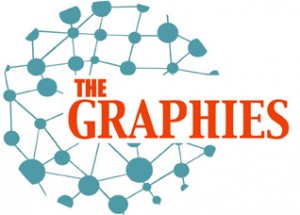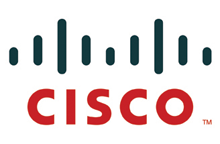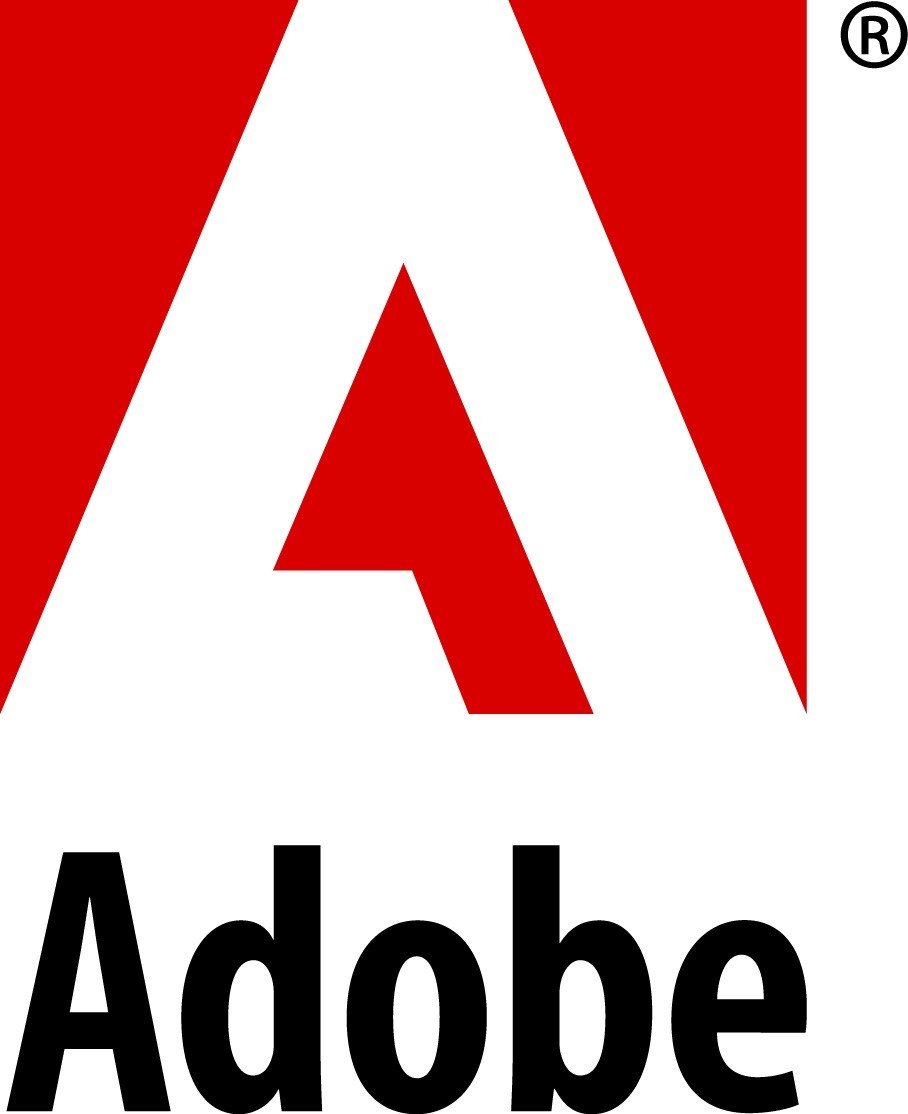 We are excited to announce the winners of our inaugural graph awards, the Graphies and the #ShowMeYourGraph Twitter Contest!
The GraphConnect Awards (“Graphies”) recognize and celebrate individuals and teams that are developing innovative and impactful graph database applications. GraphConnect 2012 is the first year of these awards.
For Most Innovative Open Source Graph Application:
For Most Innovative Graph Application on a Website:
We are excited to announce the winners of our inaugural graph awards, the Graphies and the #ShowMeYourGraph Twitter Contest!
The GraphConnect Awards (“Graphies”) recognize and celebrate individuals and teams that are developing innovative and impactful graph database applications. GraphConnect 2012 is the first year of these awards.
For Most Innovative Open Source Graph Application:
For Most Innovative Graph Application on a Website:
Gil Hildebrand for Squidoo Mat Tyndall for Tinj.co
For Most Innovative Education Graph Application:Javier de la Rosa for CulturePlex Lab David Fauth for IntelliWare Systems Peter Moore for Clados Management LLC
For Most Innovative Social Graph Application:Axel Morgner for DOSB New Media GmbH Paul Stevens for Reachable Gian Luca Farina Perseau for 21Style Nikhil Lanjewar for YourNextLeap Burak Arikan for Graph Commons Christopher Thibault for Viadeo
For Most Innovative Enterprise Graph Application:Kamille Nixon for Comindware Prem Malhotra for Cisco Systems Trevor Mack for The MITRE Corporation Christian Elgart for Adobe Systems Steve Romney for Shutl Ltd. Markus Paaso for Sagire Software Oy
We are also very excited to announce the winners of our #ShowMeYourGraph Twitter Contest!Best Overall Graph goes to Ramiro Gómez (@yaph) for his James Bond Actors Graph.
Best Neo4j Graph goes to David Fauth (@davefauth) for his graph on Super PAC contributions.
Congratulations to all of our winners! We were thrilled by the quality and quantity of the submitted entries and had a difficult time choosing the winners. Stay tuned for a call for entries for the next round of Graphies and our #ShowMeYourGraph contest! For Most Innovative Open Source Graph Application:Axel Morgner for Structr (Use Case: Content Management – Industry: Web/ISV)

From using Neo4j, Structr quickly gained simplicity in the technology stack, flexibility to cope with changing requirements, and increased performance in orders of magnitudes, compared to a relational approach.
Structr has leveraged Neo4j to handle Content Management-related problems with comparably simpler techniques. Storing, accessing and manipulating tree structures in a graph database doesn’t require object-relational mapping, which allows more room to focus on the business, not on technology.
For Most Innovative Graph Application on a Website:Gil Hildebrand for Squidoo (Use Case: Social and Recommendations – Industry: Web/ISV)
Squidoo is the popular social publishing platform where users share their passions. They were founded in 2005 and today are ranked in the Quantcast Top 50 US sites. They have recently created a new product called Postcards, which are single page, beautifully designed recommendations of books, movies, music albums, quotes, and other products and media types. They encountered a problem in that once someone creates a postcard, they needed to be able to hook it up to other postcards, to create context.
They realized that this was fundamentally a graph problem; they needed a powerful database to organize their Postcards taxonomy and generate recommendations for what people should be doing next. So they started researching graph databases and Neo4j emerged as a top choice, and after evaluating the requirements, they built a simple prototype and quickly determined that Neo was the ideal choice as the primary data store for their Postcards taxonomy.
Although Squidoo’s Postcards product is still in private beta, Neo4j was clearly the perfect fit for the problem they had to solve. They can now focus on creating an awesome experience for their users, instead of worrying about scaling or architectural concerns.
Mat Tyndall for Tinj.co (Use Case: Recommendations – Industry: Web/ISV)
Tinj is a “colorful” movie rating system. One challenge that they were finding is that five-star overall ratings don’t cut it for the complex world we live in. In order for them to match content to users, the content needed to be categorized and users’ tastes had to be collected.
They began using Neo4j to store all the ratings in the proper context, node.js for the server, and backbone.js and bootstrap on the client.
For Most Innovative Educational Graph Application:Javier de la Rosa for CulturePlex Lab (Use Case: Education – Industry: Graphs)
![]()
CulturePlex Lab is a laboratory located at Western University (Ontario, Canada) that does research on cultural complexity and actively practice digital humanities. Some of their biggest challenges before implementing Neo4j were managing graph collaboration, providing useful and interactive interfaces, handling typed data with flexible schemas, and providing ease of use. The main goal was to build an easy-to-use tool for researchers and non-tech people, a tool to provide an entry door to the graph world, its power and versatility.
They created their own platform called Sylva using Neo4j at the core, providing an interface that was easy to learn and use. Neo4j is the core of the system and as a result, Sylva is now a web-based, free, easy-to-use, flexible, and scalable database management system that helps people collect, collaborate, visualize and query large data sets.
The lab has had several test users to date and all of the experiences for them have been extremely positive. Researches can now understand and use databases and graphs as a normal part of their research routine. The improvement of collaboration in research and the applications for teaching are very important elements.
David Fauth for IntelliWare Systems (Use Case: Business Intelligence – Industry: Government)

IntelliWare Systems is a privately owned company founded in 2005 to provide management consulting, advisory, and analysis services to the national security community. The company is headquartered in Fredericksburg, Virginia, with operations in Virginia, The District of Columbia, and Colorado. IntelliWare Systems chose to implement Neo4j, as it is an easy-to-use graph database that could enable quick modeling of the FEC data. Another factor was Neo4j’s great online community and the availability of excellent resources to help graph database development.
For IntelliWare, the key benefits since implementing Neo4j include easy visibility of paths and patterns that may not otherwise be obvious when using a relational database or similar technology. Users can also quickly load data, query the data in Neo4j and then see results almost immediately.
Peter Moore for Clados Management LLC (Use Case: Graph Tooling – Industry: Web/ISV)

Clados Management LLC is an RIA based in Silicon Valley. They are currently using Ontext’s OWLIM 3.5 which is the same RDF triplestore that powers the BBC Sports website and the BBC Olympics 2012 website.
Clados chose the graph model because they built their application to browse the interrelationships between products and companies and since these interrelationships are many-to-many, relational database SQL queries required recursive joins, making them complicated and slow.
They found that graph databases solved those complexity and speed problems and also enabled them to change their database design over time as their model for the world changes.
For Most Innovative Social Graph Application:Axel Morgner for DOSB New Media GmbH (Use Case: Social and Content Management – Industry: Web/ISV)

The German Olympic Sports Confederation (‘Deutscher Olympischer Sportbund’, DOSB) is the non-governmental umbrella organization of German sport. To get more in touch with the 40 million athletes, the DOSB decided to initiate a special service via Internet through the DOSB New Media GmbH, a fully-owned subsidiary of the DOSB. With splink.de the DOSB New Media has created a platform that illustrates the organized sport in Germany.
The challenge was to find a solution that could digitalize and represent the German Sports in the social web. The solution had to include social networking features but also had to function as a knowledge database. After attending a Neo Technology presentation, the decision for Neo4j was made. It became obvious that a graph database is the ideal solution for the project, as it is made to illustrate the relationships between objects what is really important in a network.
splink is the social media platform for all active and sporty people, sports clubs and sports associations. In July 2012 the system went live and splink now offers the chance to communicate, use social media functions and exchange knowledge. Members can post event dates, connect with friends, share, like and comment on videos and photos. Neo4j serves as the central database that stores all the information and relationships. With Neo4j, the development of the system took only 14 months.
Paul Stevens for Reachable (Use Case: Social, Sales and Marketing Automation – Industry: Web/ISV)
![]()
Reachable is the developer of a social enterprise solution that enables organizations to leverage their collective relationships to reach more people and close business faster. Reachable helps sales reps close more deals, recruiters find more talent, and professionals establish new business relationships.
They chose to implement a graph database because their application is focused on finding paths between people and companies. These paths include first, second, and third degree connections and must be in real-time. The calculations for the paths could not be pre-computed due to constantly changing user information. Reachable also needed to handle new connection types between people on a frequent basis. The only way to achieve the real time performance needed and to have a system flexible enough to handle new relationship types was through using a graph database.
Reachable is currently using a proprietary graph database that is built from Cogito’s graph engine. It is now able to bring on new enterprise customers with more than 1000 users in a day. They are able to continuously add millions of new people and company profiles without any impact on performance. Providing the answer in real-time is critical since users are constantly sharing their contacts with other users or new users are signing up. Graph technology allows Reachable to provide these critical analytics in real-time where other technologies would not have been able to have the performance they needed.
Gian Luca Farina Perseau for 21Style (Use Case: Content Management – Industry: Government)
21Style helps companies take advantage of the power in social and business collaboration, cloud and grid computing, mobile applications, and next-generation tools for the enterprise businesses. They have been using Neo4j since its first release and chose Neo4j because it contains all the best features of the NOSQL technologies and can manage millions of objects and relations.
For 21Style, a graph database was the best solution to catalog heterogeneous information and to collect relationships between that data. A strong requirement in their project, MuseoTorino, was to allow a free collection of relations between objects and this is one of the best features of a graph database, because the graph of relations is free of schemas and can be evolved or refined at a later time. This is a must-have in catalog management.
Nikhil Lanjewar for YourNextLeap (Use Case: Recommendations – Industry: Web/ISV)
YourNextLeap.com is building the next generation job site to change the way hiring is done in India. For job seekers, it is the smartest way to apply for jobs. It is powered by a recommendation engine, which leverages Social Curation, Psychometric Evaluations and a Career Graph to ensure a high degree of matching. By creating a career profile, job seekers can find the right jobs in the smartest way, and employers can identify the most relevant job seekers. The automated matching and intelligent filters ensure that the recruitment managers save 90 percent of time during recruitment and get 60 percent higher conversions of candidates.
Since implementing Neo4j 18 months ago, YourNextLeap.com has been able to navigate their massive amounts of data with little effort and without losing the system’s performance. They saw a major boost in performance as soon as they moved their relational data to a graph database. Further, the team plans to introduce Principal Component Analysis and similarity algorithms on their graph data set. This would be impossible to do without a graph model in place.
Burak Arikan for Graph Commons (Use Case: Social – Industry: Government and Education)
Graph Commons enables the networking of maps with friends through the use of comprehensive, aggregated information on a topic. Users can use Graph Commons to see the big picture by connecting with other people’s data through scanning ‘networks’ or ‘topics of interest.’ Users are able to connect to people and issues to create a resource network in real-time. Graph Commons moved from MySql to Neo4j because a graph database supports the graph structure of their users’ data and networks.
As Graph Commons users continue to weave variety of network maps, they are building a graph-based knowledge base whose structure is evolving based on the relationships of their data. Neo4j is key to supporting this model and is providing in-graph indexes that can turn graphs into ‘lookup lists’ for visualization.
Christopher Thibault for Viadeo (Use Case: Social – Industry: Web/ISV)
![]()
Viadeo is Europe’s #1 professional social network, and LinkedIn’s main competitor. With its international presence, Viadeo relies on simple, and high performance technology to provide professional connections to over 35 million members worldwide. Viadeo integrated Neo4j as their backend database to store all of their users and relationships. When the company’s network expanded to a level that their traditional MySQL database couldn’t handle, Viadeo experienced performance and storage issues that would not perform at the rate the company was growing.
It was at this time that Christophe Thibault, CTO, decided to implement Neo4j to store Viadeo’s data. Thibault chose Neo4j for its performance, ease of use, and its ability to quickly integrate with other applications. With Neo4j, it took about five minutes time to get started. By integrating Neo4j, Viadeo has highly accelerated their system in two ways: Neo4j has increased Viadeo’s performance by requiring less storage space, and, Neo4j required less time to restructure its existing graph.
In only two months Viadeo has successfully transitioned all of their user data from a MySQL database to Neo4j. Viadeo went with Neo4j for its simplicity and high performance, and as a result they have far less storage restrictions and faster querying times.
For Most Innovative Enterprise Graph Application:Kamille Nixon for Comindware (Use Case: Master Data Management – Industry: Web/ISV)
Comindware is an innovative software company on a mission to help people work together more efficiently. They do this by providing a breakthrough web-based software solution for automating and managing business workflow processes and automatically connecting them with individual tasks and collaboration features for more streamlined and manageable execution.
The problem they faced was that by using classic relational database management system, they spent a lot of time upgrading the database structure and much more time on upgrading business rules. They wanted to build a number of powerful professional applications as well as vertical solutions for particular industries on a single platform. They also wanted to make their applications easy to adapt for a specific business environment of a particular company without much effort. They started searching for the solution to their problem.
Eventually they came to the conclusion that the solution to their problems would be a graph-based platform that interprets data model structures. One of the key elements of Comindware architecture is a Semantic Web Powered database. They are working on the new enterprise product and vertical solution simultaneously right now and see many benefits. Comindware is now ready to build an unlimited number of applications with completely different data models and business processes on the very same platform, using the very same common data and functionality.
Prem Malhotra for Cisco Systems (Use Case: Master Data Management – Industry: Data Communications)
Cisco Systems is the market-leading manufacturer of computer networking equipment. Cisco needed to provide real-time query capabilities over the complex versioned graph data structure that models the entire Cisco sales organization. Data durability and integrity were also of very high importance.
Cisco chose Neo4j to power their next generation sales organization MDM system. By using Neo4j, Cisco has been able to model their complex conflict detection algorithms with ease, and have it run in real time.
Neo4j provides Cisco with a solid, well-supported database solution, capable of meeting their real-time query requirements on a complex and connected dataset. Cisco is now able to perform real- time conflict detection of sales compensation assignments. Neo4j is currently used in several projects at Cisco.
Trevor Mack for The MITRE Corporation (Use Case: Master Data Management – Industry: Government)
The MITRE Corporation works in the public interest to engineer modern and collaborative solutions for a variety of governmental agencies. MITRE needed a system that would be more flexible and could be used to have a view into the highly connected world, which is project management (requirements, outcomes, people, projects, organizations, departments, customers, etc.). This, on top of the ever-evolving customer requirements of the system they were creating, keeps the data schema in high flux throughout the initial stages of the project development lifecycle. The other major problem faced by the development team was the need to store historical information within the graph though keeping those historical attributes references for lookup and analysis purposes.
The turning point of this new application framework was through the use of Neo4j as a leading backend data persistence layer. Through the use of graph databases, Neo4j specifically, the project gained great performance efficiencies as well as a lower complexity variable of data queries.
Christian Elgart for Adobe Systems (Use Case: Social and Content Management, User Authorization and Access Control – Industry: Web/ISV)
Adobe Systems is arguably one of the world’s most successful software companies. Their extensive product suite offers software for publishers, artists, photographers, advertisers, and many other professionals. The image manipulation series of programs, including Acrobat, Photoshop, and Illustrator, have become a de facto standard in the media industry. Until recently, Adobe had focused on selling software for desktop computers. However, in October 2011 at the annual Adobe MAX conference, the Creative Cloud was introduced. The Creative Cloud aims to be a central hub for the sharing of files created by the Adobe suite of products.
As a global service, the Creative Cloud is used by millions of people around the world. It has to be available 24/7/365, and must provide the scalability and redundancy necessary for a service of that scale. Another consideration is the fact that running on Amazon EC2 poses challenges for high-performance applications.
As a database, Neo4j stood out with clear advantages in capturing Adobe’s rich data model fully, while still allowing high performance queries ranging from simple reads to advanced analytics, all on the same database. Neo4j’s high availability provides Adobe with the necessary scalability and redundancy needed for Creative Cloud. By choosing Neo4j, Adobe has made a solid database choice. With its clustering capabilities, as well as being able to store and query highly connected data, Neo4j is unique in its offering. It excels in performance, while providing the necessary durability required for user data. Neo4j is currently being considered for other projects at Adobe.
Steve Romney for Shutl Ltd. (Use Case: Geo and Recommendations – Industry: Logistics)
Shutl is able to provide fast, convenient, and flexible courier delivery by utilizing same-day couriers and acts as an aggregator and market maker of such services. With Shutl, courier companies enter information about their fleets into the Shutl platform, including pricing, postcode coverage, and time availability, which is used to connect them with clients. Shutl is challenged in leveraging this information to indentify an optimal courier based on price and quality factors all within the constraints of the delivery. Delivery constraints may include pickup and delivery postcodes, dimensions of the products to be delivered, vehicle capacities, which carriers operate which vehicles in which geographic areas and at what times, and store opening hours. The business therefore is dependent on optimized use of data that is connected in many ways and in many complex interrelationships.
As Shutl’s platform grew, the team began to experience several challenges with their initial solution based on a relational database. They were also beginning to understand some of the fundamental limitations and impact on performance they would face with a traditional database. It soon became apparent that a number of features that Shutl wanted to support would not be technically feasible given the nature of a relational database.
Shutl implemented Neo4j as an embedded database in a service providing a restful api. They found an ideal solution to their challenges by leveraging the rich data model allowed by Neo4j to model complex connected data.
Markus Paaso for Sagire Software Oy (Recommendations – Web/ISV)
Sagire was founded in 2001 to provide high quality consulting, project and outsourcing services for leading companies.
While working on a project, the Sagire team encountered a problem in finding an efficient way to match jobs and applicants using the history of applicant actions and resumes. Matching a growing number of applications and open positions was becoming more and more challenging.
Sagire began with developing resume parsing and mining methods with a rich recommendation system that provides useful real-time recommendations for recruiters. They soon discovered that fastest way to tell the recruiter which applicants would be suitable for the job was by implementing Grails, Neo4j, and MySQL. For Sagire, the key to their real-time performance was the Neo4j graph database under the hood. Sagire has an ordinary SQL database that contains all the data and embedded Neo4j graph database with high connectivity data.
Keywords: Awards • graphconnect • Graphies






